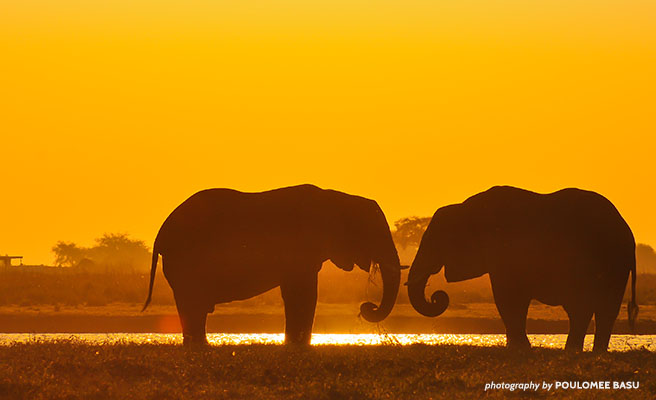ICYMI: 3 Key Outcomes for Africa’s Elephants

Since the end of August, several developments have transpired that have significant implications for one of Africa’s most iconic pachyderms. Here’s a quick summary of these important updates:
1. The Great Elephant Census presents troubling numbers
On 31 August, ahead of IUCN’s World Conservation Congress, Paul G. Allen’s Vulcan Inc. released the results of a two-year pan-African survey of savanna elephant populations. The Great Elephant Census revealed a 30 percent decline in elephant numbers from 2007 to 2014, with a population of 352,271—a startling figure compared to the figures most conservationists had been using before then, which had ranged between 500,000 and 650,000.
Poaching was identified as the leading cause of this decline.
The census counted elephant populations in 18 countries, with comparable data available for 15 of those surveyed. The 352,271 elephants identified are said to represent at least 93 percent of the savanna elephants in the countries surveyed. Of those elephants, 84 percent were sighted in legally protected areas. But high levels of elephant carcasses were also observed in many of those same protected areas, underscoring the fact that elephants are under increasing threat no matter where they go.
2. A new IUCN report corroborates this trend of rapid decline
The extent of Africa’s poaching crisis was further emphasized in late September, when the IUCN Species Survival Commission’s African Elephant Specialist Group (AfESG) released a report on the state of elephant populations across the continent at the 17th Conference of the Parties to CITES (CITES CoP 17). IUCN’s African Elephant Status Report analyzed population numbers and distribution across all 37 of the elephant range states. (It did this by gathering data from a variety of sources, including dung counts and aerial surveys.)
What AfESG found was evidence of the worst declines in elephant populations over the past 25 years, largely due to high levels of poaching in the most recent decade. Elephant numbers appear to have dropped by 111,000 individuals since 2006. Per IUCN’s report, then, this brings the total number of elephants across Africa to around 415,000.
Regionally, the report noted that Southern Africa holds roughly 70 percent of the continent’s elephants. East Africa holds roughly 20 percent, while Central Africa has 6 percent and West Africa has less than 3 percent. East Africa, however, had experienced a nearly 50 percent reduction in its population, making this the region most affected by poaching.
3. CITES refuses to reopen the international ivory trade
Given these two reports, it was therefore heartening to see the parties at CITES CoP17 refuse to add fuel to an already raging fire. Two proposals discussed at CoP17 sought to open the doors for international sales in stockpiled ivory. Both Proposal 14, put forth by Namibia, and Proposal 15, put forth by Namibia and Zimbabwe, were aimed at removing annotations to elephant populations listed in Appendix II that currently prohibit the international sale of ivory products from these populations. But, as CoP17 entered its second week in early October, both proposals were soundly rejected, and the Parties to CITES endorsed the closure of all domestic ivory markets worldwide. What’s more, an unexpected ally joined in the call for an end to the ivory trade: Botswana.
Botswana has the largest elephant population of any country in Africa; the Southern African country is also surrounded by neighbors who support a limited, legal ivory trade. At CoP17, Botswana’s minister of environment, wildlife and tourism noted that, while the country had previously supported the idea of limited trade from countries that sustainably managed their elephant herds, the time had come where it could no longer take this position. (Indeed, most conservationists agreed that—with the current poaching crisis primarily driven by unsustainable demand for ivory in parts of Asia—reopening such trade would only put Africa’s elephants at greater risk.) There was now a need for total unity against ivory trade for the sake of those elephants that remain, the minister added.
Looking ahead
So, what does all this mean for future conservation efforts? For AWF, it means continuing to aggressively pursue an approach focused on stopping the killing of elephants, stopping the trafficking of their tusks and stopping the demand for ivory products.
It also means continuing to work with Africa’s business leaders and heads of state to integrate wildlife protection into national and regional development plans. Ensuring a future for Africa’s elephants may seem like a daunting task, but, as these recent developments indicate, there’s no better time to unite around this worthy cause.
Learn more about AWF’s efforts to halt the elephant poaching crisis.